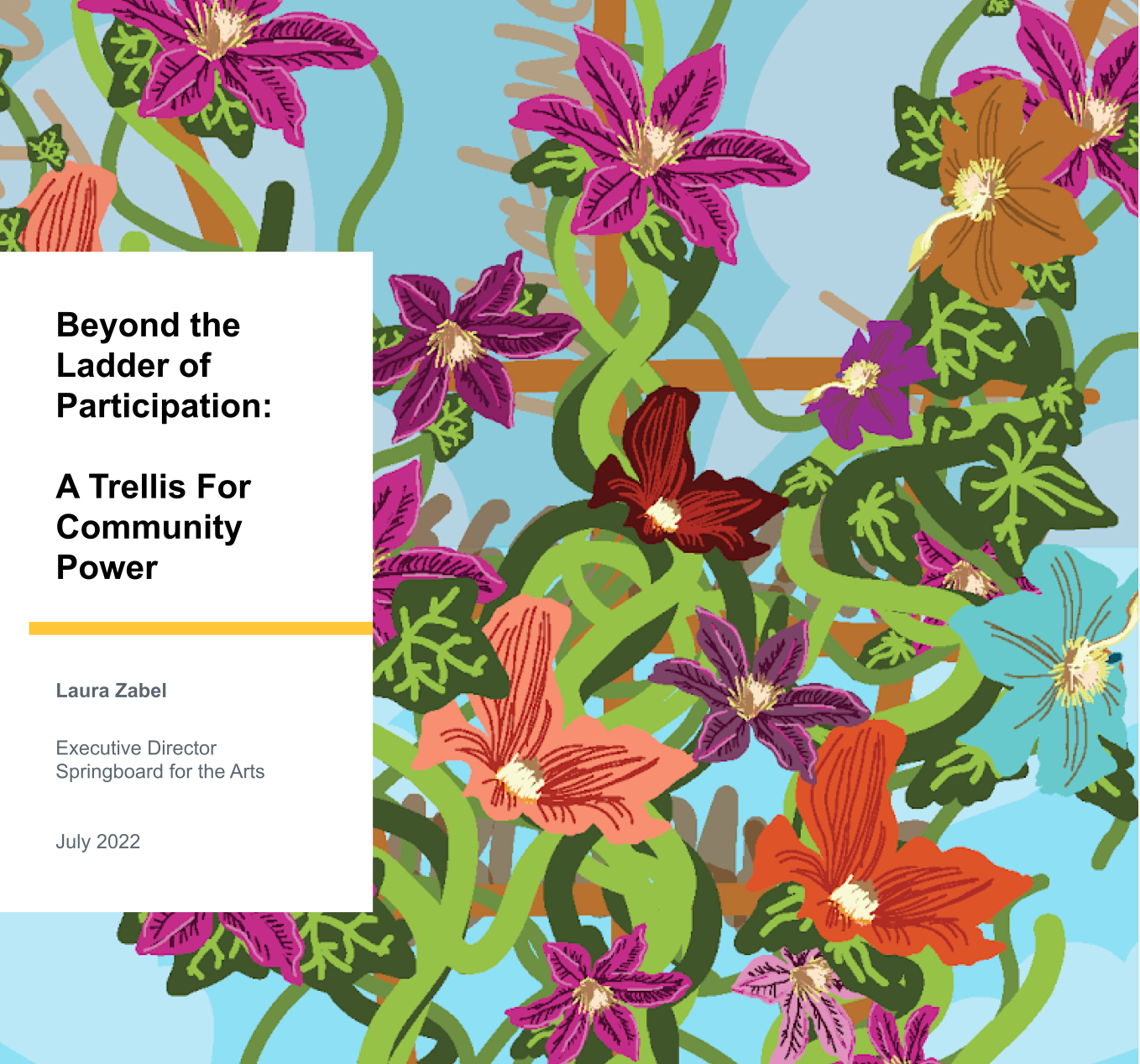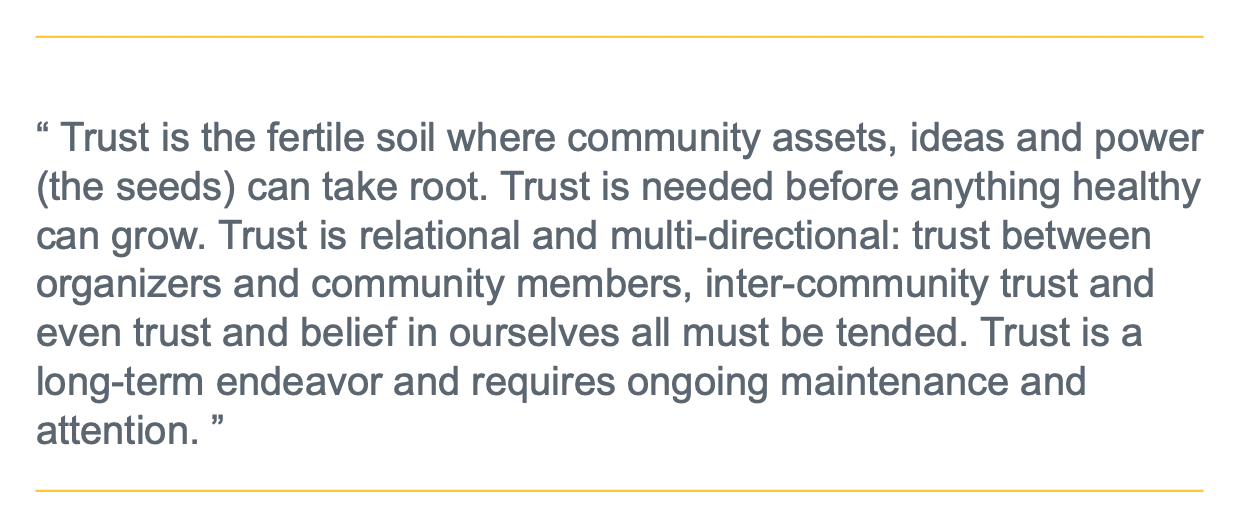At Springboard for the Arts, we have a variety of materials about our work, and we are excited to share these resources with educators, instructors, and organizers for use in formal and informal classroom settings. If you have questions about incorporating Springboard resources and publications into your curriculum, let us know!
These resources include a new paper "Beyond the Ladder of Participation: A Trellis for Community Power," by Springboard for the Arts' Executive Director Laura Zabel.
This article was created as part of the Senior Policy Fellowship for the Studio for Creativity, Place and Equitable Communities at Arizona State University. This fellowship provides selected seasoned creative placemaking and placekeeping practitioners and scholars with time and resources to harvest their insights and experience for the benefit of the field.


"Beyond the Ladder of Participation: A Trellis for Community Power," features illustrations by Dustin Lopez (Navajo/Laguna Pueblo). Dustin is an artist and graphic designer based in Phoenix, AZ. Currently, he works as an educator, designer, letterer, and collaborates with others in art, design, and education. Explore his work at www.dopez.design. This article was also supported with thought partnership and editorial support from Dr. Maria Rosario Jackson, copy edit services from Melissa Dunmore and design support from Christina You-sun Park.
Read an excerpt from "Beyond the Ladder of Participation: A Trellis for Community Power":
Part of the aim of the trellis is to support what is meant to grow, which challenges organizers to resist predetermined outcomes and push for longer term measurements of effectiveness. But that doesn’t mean we shouldn’t pay attention to whether the trellises we are building are effective. So, how do we know if anything is growing? Early signals of success might resemble narrative change, new relationships, and possibility.
Narrative change: What is the story we are telling about our place or our people? Years of systemic extraction and disinvestment create narratives both outside and inside a community that inhibit power. The media narrative about under-invested urban neighborhoods and rural places is full of stories about decline and fear. Creating new narratives that center the assets, creativity and wealth (remember how we redefined these concepts) of the community is essential to building power. Find ways to understand the story the community is telling about itself, so you can see it begin to shift. You might measure this by tracking media mentions, surveying neighbors, or eavesdropping in the neighborhood coffee shop.
New relationships: For sustainable power to grow, new relationships are necessary. Both inter-community and intra-community social connections need to be strengthened so people have practice working together, know how to find the resources they need to make change, and have a support network to sustain them. Try to understand how people are working together, and track if small projects create larger, or more sustained, opportunities for collaboration.
Possibility: A sense that not only is change possible, but that each of us has the tools and ability to make change. Personal and collective power grows from experience. Finding small wins with small projects helps build our ability and resolve to make deeper and bigger changes. Create opportunities to celebrate these early successes, which will also give you the opportunity to amplify the story of what is possible, connect more people to the work, and make community wealth and power more visible to others. The trellis should support and encourage the idea that change is possible, in a place worth time and investment from the people who live there.
In turn, these signals of success generate power, ownership, and opportunity that is simultaneously literal and metaphoric as well as individual and collective. This power, ownership and opportunity in service of community wealth and culture, creates a regenerative cycle in a community that can lead to long-term policy and system change.
MORE RESOURCES
Springboard’s core professional development and business skills curriculum, created by artists for artists.
This handbook is a practical manual for individual artists who would like to begin or deepen this kind of artistic practice – work in and work with community.
This book includes instructional and thought-provoking case studies and essays from today’s leading thinkers in creative placemaking.
Arts & America, published by Americans for the Arts
Creativity Connects, published by National Endowment for the Arts and Helicon Collaborative
